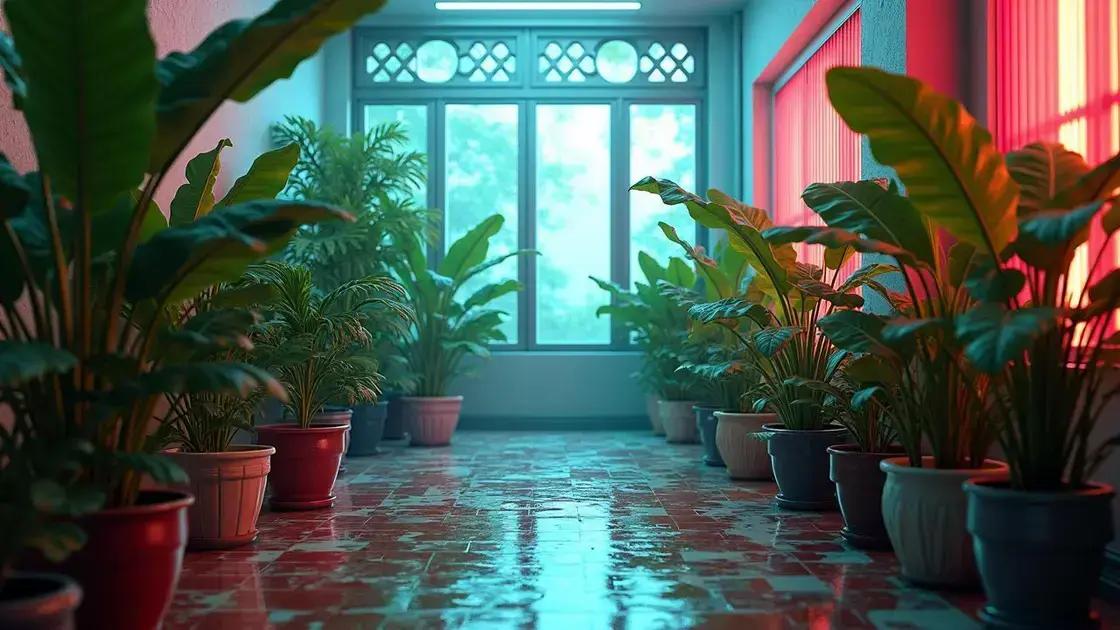How to Care for Banana Plant Indoors: 5 Essential Tips for Thriving Growth
How to care for banana plant indoors is a question many plant enthusiasts ponder. Exotic yet attainable, this plant brings a tropical feel to your space. To ensure your banana thrives, it’s crucial to understand its environmental needs. This guide will explore essential practices for nurturing your indoor banana, helping you create the perfect habitat for growth.
Table of Contents
ToggleLight requirements for banana plants indoors
Light requirements for banana plants indoors are essential for their growth and overall health. Adequate lighting conditions play a crucial role in mimicking the tropical environment these plants thrive in. Understanding how to provide the right light can lead to vibrant foliage and increased growth. Here’s what you need to know:
Understanding light exposure types
- Direct sunlight: Banana plants love bright, direct sunlight for at least 6 to 8 hours a day. Placing them near south-facing windows often provides the best exposure.
- Indirect sunlight: If direct sunlight is too harsh, consider filtered light from sheer curtains, allowing enough brightness without scorching the leaves.
- Artificial lights: For rooms with limited natural light, using grow lights can supplement exposure. Choose full-spectrum LED lights for optimal growth.
Optimal light conditions
- Place your banana plant near a light source that offers 12-14 hours of bright light daily.
- Rotate the plant regularly to ensure even light distribution across all sides.
- Monitor the plant for signs of light deficiency, such as yellowing or leggy growth.
Impact of light on growth
| Light Type | Growth Effect |
|---|---|
| Direct Sunlight | Promotes robust growth, vibrant foliage, and fruiting in mature plants. |
| Indirect Sunlight | Encourages steady growth, though may result in less vigorous foliage. |
| Artificial Light | Allows growth in darker spaces but requires proper spectrum and timer. |
Providing the right light conditions is just one aspect of exploring indoor gardening techniques for your banana plant. Keep experimenting and adjusting based on your plant’s needs, and soon you’ll be on your way to enjoying a lush indoor garden.
Best watering techniques for indoor banana plants

Best watering techniques for indoor banana plants are crucial to keeping your plant healthy and thriving. Proper watering is essential to prevent overwatering or underwatering, both of which can lead to serious issues. Here’s how to master the art of watering for your banana plants.
Understanding the needs of banana plants
- Banana plants prefer consistently moist soil to mimic their natural tropical environment.
- They require a good balance of moisture, ensuring the soil is neither too soggy nor too dry.
Steps for effective watering
- Check the soil moisture: Use your finger to poke about an inch into the soil. If it feels dry at that depth, it’s time to water.
- Water thoroughly: When watering, do so until you see water draining through the bottom of the pot, ensuring the roots are well-hydrated.
- Use the right water: Room temperature, filtered water is ideal for banana plants, as it helps prevent stress on the plant.
Common watering mistakes to avoid
- Overwatering can lead to root rot. Monitor moisture levels carefully!
- Underwatering may cause leaf droop and vulnerability to pests.
Benefits of proper watering techniques
| Technique | Benefit |
|---|---|
| Thorough watering | Encourages deep root growth and improves overall plant health. |
| Regular monitoring | Helps catch issues early, maintaining optimal growing conditions. |
| Using filtered water | Reduces chemical exposure and promotes better nutrient absorption. |
By incorporating the exploring indoor gardening techniques, you will see your banana plant flourish with proper watering practices. Always observe and adjust based on how your plant responds.
Choosing the right soil for healthy banana growth
Choosing the right soil for healthy banana growth is vital for ensuring your indoor banana plant thrives. The soil type significantly impacts root health and nutrient availability, and using the right mix can lead to lush foliage and strong growth.
Key characteristics of ideal soil
- Well-draining: Banana plants need soil that prevents water pooling, which can cause root rot. A good mix helps maintain moisture while allowing excess water to flow away.
- Organic matter content: Incorporating organic materials like compost or peat moss enriches the soil with vital nutrients.
- pH level: Aim for a slightly acidic to neutral pH (between 5.5 and 7.0) for optimal nutrient absorption.
Recommended soil mixtures
- Commercial potting mix: Many premade mixes specifically designed for tropical plants contain the ideal ingredients for banana growth.
- Homemade blend: Mix equal parts of potting soil, peat moss, and perlite to create a well-balanced environment.
- Coconut coir: This is an eco-friendly alternative that retains moisture and works well when blended with other materials.
Benefits of proper soil selection
| Soil Type | Benefits |
|---|---|
| Well-draining mix | Reduces risk of overwatering and root diseases. |
| Organic-rich mix | Provides essential nutrients for healthy growth and development. |
| Coconut coir | Improves moisture retention while ensuring good drainage. |
When exploring indoor gardening techniques, consider the vital role of soil in your banana plant’s well-being. Selecting the right soil is a key aspect of nurturing a healthy, thriving indoor garden.
In conclusion
Caring for your indoor banana plant requires attention to several key factors, including light requirements, proper watering techniques, and choosing the right soil for healthy growth. By following these essential tips, you can create an optimal environment that allows your banana plant to thrive and flourish in your home.
Additionally, don’t hesitate to explore resources and communities that focus on houseplant care. For more tips on enhancing your indoor garden, you can find valuable insights and experiences shared by fellow gardening enthusiasts.

